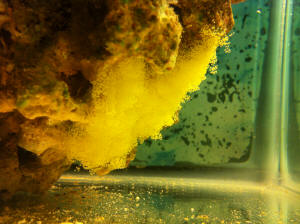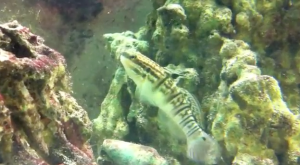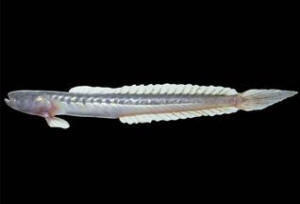|
FAQs on Amblygobius Gobies,
Reproduction/Breeding
Related Articles: Genus
Amblygobius Gobies,
Related FAQs: Amblygobius Gobies
1, Amblygobius Gobies 2, & FAQs on:
Amblygobius Identification, Amblygobius Behavior, Amblygobius Compatibility, Amblygobius Selection, Amblygobius Systems, Amblygobius Feeding, Amblygobius Disease, &
True Gobies, Gobies 2, Goby
Identification, Goby Behavior,
Goby Selection, Goby Compatibility, Goby Feeding, Goby Systems, Goby Disease, Goby Reproduction, Clown Gobies, Neon Gobies, Genus Coryphopterus Gobies, Mudskippers, Shrimp Gobies, Sifter Gobies,
|
|
Sleeper Banded Dragon Gobies, repro., raising young, Rotifer
sourcing, culture - 12/01/2012
<Joel, twelve megs of pix? You're killing us!>
Hello, I was told you and the crew may be the only ones to help me.
My name is Joel Martynuik and I live in Edmonton Alberta Canada. I
recently discovered that my male and female Dragon Gobies are now a
mated pair and spawning to produce eggs and have the eggs hatch into
fry. I tried doing all the research I could about breeding and raising
Dragon Gobies but found nothing no where and no aquarium fish store
managers know nothing either but haven't even herd of someone having a
mated pair in captivity before. I tried doing a rough estimate of how
many eggs and fry there where and I used my judgment by a 5ml vile
volume as a basis and think its around the 3-5 thousand mark. The
eggs get laid on a piece of live rock and then I take that live rock out
and put it in a 5 gallon tank with the same aquarium water and a small
heater and foam bubble filter. The eggs hatch after 3-5 days and die at
4 days after hatching with no food being given. They last also 4 days or
so with food being given being Rotifers but Im not to sure how many they
need especially considering their amount as a whole in the tank. I've
had 3 batches so far with each batch being 2 weeks from one another,
I've only done anything about the 3rd batch because the first two I
didn't know what was going on and the fry just all died with me knowing
nothing about them. I was told that they'll only eat a live amphibian
but my problem is that because they're only 1mm big I don't know if a
Rotifer can fit in its mouth. I've researched that the average rotifer
is between 150-300 microns big and that a brine shrimp net is about 300
microns big. The brine shrimp net can catch the Dragon Goby fry so I
assume they're bigger than 300 microns. Do you know how small
a baby Rotifer is and if a 53 micron sieve could catch them?
<I wouldn't try to sieve these out, but just add a portion/aliquot of
the culture media and all>
Also how do you know what kind of Rotifer is what and if there's a
specific species of Rotifer to feed to these small baby fry?
<There are quite a few; I'd be reading Reed Mariculture et al's sites re
what they offer>
Are some species smaller and bigger than others?
<Oh yes>
How and where could I get them?
<The online culture outfits... or raising your own... are you familiar
w/ Frank Hoff's works? Use the string "frank hoff's plankton culture
manual rotifers" to search re>
Do you know any other similar fish that has fry like this?
<Mmm, a few>
I looked up the Lancer Dragonet but also haven't found any information
to help me because they're so rare in captive breeding. I would
really like to successfully breed these fish but would appreciate some
help and guidance for the process. I've never had any breeding
experience tell now but have own fish for a while now.
Another note is that once a baby fry comes off of Rotifers and onto baby
brine shrimp, how does that transition take place without endangering
killing the fish from them not eating?
<If they're ready size-wise to handle Artemia nauplii, no problem>
(Brine shrimp eat Rotifers right?) so putting the two in at feeding at
once, one will eat the other as they're being eaten?
<Yes>
I hope you can get back to me ASAP as Ill have a newly hatched batch in
4-5 days from now because they just laid eggs again last night and want
this batch to make it =)
I also have videos on YouTube for your reference
......rocketrabbitracing7 user name
http://www.youtube.com/watch?v=KQovaO3R68w
http://www.youtube.com/watch?v=prCI9EtmIvM
http://www.youtube.com/watch?v=ZZ1j9MC2Wx0
http://www.youtube.com/watch?v=nmqcobyjodU
Thank you. Sincerely, Joel
<Am sending your query to our Neale Monks for his input, as he's much
better versed in brackish matters, livestock.
Bob Fenner>
|
 |
Re: Sleeper Banded Dragon Gobies - 12/01/2012
Hello Joel,
The video doesn't look like Gobioides to me; any chance of a reasonably good
picture of the adults?
Thanks,
Neale
Re: Sleeper Banded Dragon Gobies - 12/02/2012
Cheers, Neale
On 1 Dec 2012, at 18:06, Joel wrote:
yup, if you watch the full thing lol of the male guarding the eggs, you'll
see me pan the camera right to show the female in good picture. lol no
offense but I know for a fact that these are sleeper banded dragon gobies =P
http://www.youtube.com/watch?v=KQovaO3R68w
Ah, the plot thinnens.
Bob assumed these were Gobioides, which is the Dragon Goby of the hobby.
Have a look at Gobioides in the attached image (from discoverlife.org). The
fish are very long, and their eyes are tiny (indeed, in some species
vestigial and covered with skin).
<Ahh! Sorry re Neale. I had/did not look at the videos... I assumed... B>
Your fish (in the screenshot) is a marine goby, Amblygobius phalaena, and
despite being sold as a sleeper goby (family Eleotridae) is a plain vanilla
goby (family Gobiidae).
<A fun and quite hardy "sand sifter" of note. B>
In any case, Bob, I have no knowledge of breeding these gobies at all. Dr.
Naomi Delventhal is a good person to talk to about breeding gobies; she's
bred quite a few, including ones with marine larval stages. She's at the
University of Manitoba. Typically male gobies guard the eggs until they
hatch, but the fry are very small and planktonic (even some freshwater
species have planktonic, marine fry despite spawning in freshwater). So your
problems aren't getting them to spawn -- quite a few gobies will spawn in
captivity -- but rearing the fry. There's an ample literature on breeding
Elacatinus spp.; use that as a starting point. Hope this clears things up;
or, as the old gumshoe private eyes would say, "Case closed."
<Thank you for your help Neale. B> |

 |
|
|

